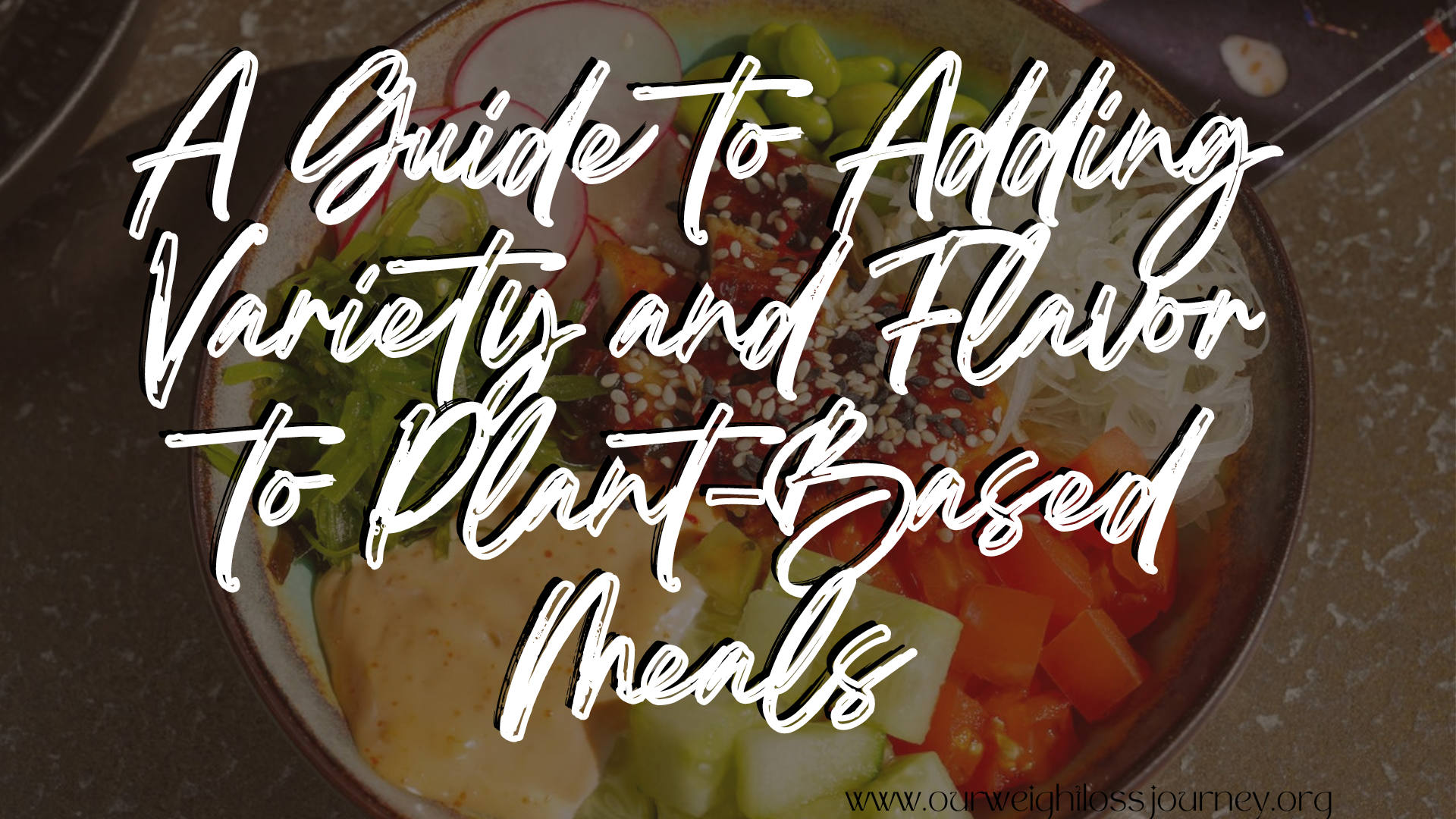Are you following a plant-based diet and worried about getting bored with your meals? Look no further! This guide is here to help you add a burst of variety and flavor to your plant-based meals, ensuring that every bite is a taste sensation. Say goodbye to bland and hello to a world of deliciousness as we explore different techniques, ingredients, and recipes that will leave you excited to try new dishes every day. Whether you’re a seasoned vegan or just starting on your plant-based journey, this guide has something for everyone. Get ready to transform your meals into culinary masterpieces that will make your taste buds dance with delight!
Understanding Plant-Based Diets
A plant-based diet typically focuses on incorporating a variety of plant foods such as fruits, vegetables, whole grains, legumes, nuts, and seeds. It emphasizes the consumption of plant-based foods while minimizing or eliminating the intake of animal products. This lifestyle choice has gained popularity not only for its environmental and ethical considerations but also for its numerous health benefits.
Benefits of a Plant-Based Diet
Adopting a plant-based diet can provide several health benefits. Firstly, it is rich in essential nutrients like vitamins, minerals, and fiber, which are vital for maintaining overall well-being. Secondly, it can help to reduce the risk of chronic diseases such as heart disease, type 2 diabetes, and certain types of cancer. Plant-based diets are typically lower in saturated fat and cholesterol and higher in antioxidants, which can contribute to improved cardiovascular health. Additionally, plant-based diets have been associated with healthy weight management and improved digestion due to their high fiber content.
Common Misconceptions about Plant-Based Diets
There are several misconceptions surrounding plant-based diets, and it’s important to address them. One common misconception is that plant-based diets lack protein. However, with proper planning and variety, it is entirely possible to meet one’s protein needs on a plant-based diet. Another misconception is that plant-based diets are restrictive and boring. In reality, plant-based diets offer a wide range of flavors, textures, and cooking methods that can make every meal exciting and satisfying. Lastly, some people believe that plant-based diets are expensive, but with careful meal planning and bulk shopping, it can be an affordable lifestyle choice.
Building a Balanced Plant-Based Plate
To ensure that you are getting all the necessary nutrients, it is essential to understand macronutrients on a plant-based diet. Macronutrients include carbohydrates, fats, and proteins, which are the main sources of energy for your body. Plant-based diets can be rich in carbohydrates, as they include whole grains, legumes, and starchy vegetables. Healthy fats can be obtained from sources like avocados, nuts, and seeds. When it comes to protein, legumes, such as lentils and beans, are excellent sources. Incorporating a balance of these macronutrients is key to building a well-rounded plant-based plate.
Including whole foods is also crucial for a balanced plant-based diet. Whole foods are minimally processed and retain their natural nutrients. They offer more fiber, which aids in digestion and promotes satiety. Filling your plate with colorful fruits and vegetables, whole grains, and nuts and seeds is a great way to ensure you’re getting a wide range of essential vitamins, minerals, and antioxidants.
While some worry about meeting their protein needs on a plant-based diet, it’s important to note that there are plenty of plant-based protein alternatives. Legumes and beans are particularly rich in protein and can serve as the primary protein sources in meals. Additionally, tofu, tempeh, and seitan are versatile and protein-rich options that can be used in various recipes. For those who prefer convenience, plant-based protein powders can be easily incorporated into smoothies or baked goods. Don’t forget about the role of nuts and seeds in meal variety – they can be added to salads, stir-fries, or enjoyed as a snack.
Spicing It Up with Herbs and Spices
When it comes to adding flavor to plant-based dishes, herbs and spices are your best friends. Popular herbs such as basil, cilantro, and rosemary can elevate the taste of your meals. Spices like cumin, turmeric, and paprika offer not only flavor but also added health benefits. Understanding the various flavor profiles of herbs and spices will help you create delicious plant-based dishes. Additionally, creating homemade spice blends allows you to customize the flavors according to your preferences. Exploring different global cuisines is another way to find inspiration and add variety to your plant-based meals.

Utilizing Seasonal Produce
Eating seasonal fruits and vegetables has numerous advantages. Firstly, seasonal produce tends to be fresher and tastier, as it is harvested at its peak ripeness. Secondly, it supports local farmers, reduces carbon footprint, and promotes sustainability. Incorporating a variety of colors by choosing different fruits and vegetables can provide a wide range of essential vitamins, minerals, and antioxidants. Don’t be afraid to try new fruits and vegetables, as it adds excitement and diversity to your meals. Visiting local farmers’ markets or joining a community-supported agriculture (CSA) program are excellent ways to access fresh, seasonal produce.
Exploring Different Cooking Methods
Mastering different cooking methods can add depth of flavor and texture to your plant-based meals. Roasting and grilling vegetables bring out their natural sweetness and create a delicious caramelized taste. Stir-frying and sautéing are quick and easy methods that preserve nutrients and provide a satisfying crunch. Steaming and boiling vegetables help retain their essential nutrients, making them a healthy option. Let’s not forget about raw food options – salads, raw wraps, and refreshing smoothies can be nourishing and refreshing.
Experimenting with Condiments and Dressings
Condiments and dressings can take your plant-based dishes to the next level. Creating homemade sauces and dressings allows you to control the ingredients and flavors. From tangy tomato sauce to creamy cashew-based dressings, there are endless possibilities to play with. Incorporating fermented foods like sauerkraut or kimchi can add a burst of flavor and provide beneficial probiotics. Nut butters and spreads, such as almond butter or tahini, can enhance the taste and texture of dishes. Exploring different vinegars and oils, such as balsamic vinegar or avocado oil, can add a finishing touch to your meals.
You May Also Like
Plant-Based Substitutes and Alternatives
For those who are transitioning to a plant-based diet, finding suitable substitutes for dairy, eggs, cheese, and meat can be helpful. There is a wide array of plant-based options available that mimic the taste and texture of these animal-based products. For example, plant-based milk alternatives, like almond milk or oat milk, can be used in place of dairy milk. Egg substitutes, such as flaxseeds or applesauce, are perfect for baking. Plant-based cheese and meat alternatives, made from ingredients like tofu or mushrooms, can provide a satisfying and flavorful experience.
The Art of Meal Prepping
Meal prepping can simplify your plant-based journey and allow you to maintain variety and flavor in your meals. Planning meals in advance ensures that you have all the necessary ingredients on hand. Batch cooking can save time and effort, as you can prepare larger quantities of staple foods and freeze them for later use. Freezing and properly storing plant-based meals can extend their shelf life, allowing you to enjoy your favorite dishes whenever you want. Creating a balanced meal plan that includes a variety of flavors and textures is key to keeping your meals exciting and satisfying.
Finding Inspiration and Resources
If you’re looking for inspiration and resources to expand your plant-based cooking repertoire, there are plenty of options available. Cookbooks dedicated to plant-based cooking can provide a wealth of recipes and techniques. Online recipe websites are also abundant with plant-based recipes that cater to various dietary preferences and restrictions. Blogs and social media influencers often share their plant-based journeys, offering tips, tricks, and creative ideas. For those who prefer convenience, plant-based meal delivery services can provide delicious and nutritious meals right to your doorstep. Lastly, consider exploring local cooking classes and workshops that focus on plant-based cuisine – they can be a fun and interactive way to learn new skills and connect with like-minded individuals.
In conclusion, maintaining variety and flavor in plant-based meals is both achievable and enjoyable. By understanding the principles of a plant-based diet, exploring different cooking methods, incorporating various herbs and spices, utilizing seasonal produce, and experimenting with substitutes and condiments, you can create a diverse and flavorful plant-based menu. With the abundance of resources available, finding inspiration and expanding your plant-based cooking skills has never been easier. Embrace the journey, be open to new flavors, and savor the vibrant world of plant-based cuisine.




